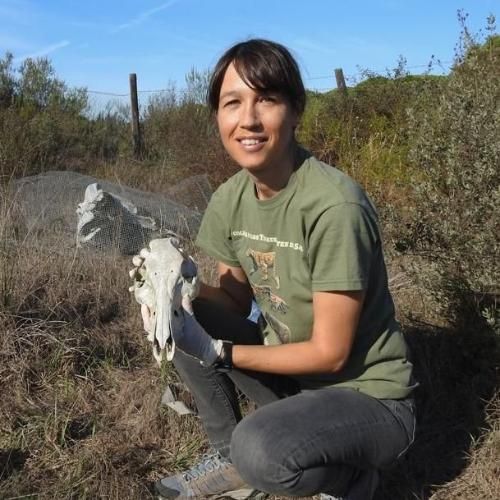
MARÍA SOLEDAD
DOMINGO MARTÍNEZ
Profesora contratada doctora
Departament: Geodinámica, Estratigrafía y Paleontología
Facultat: Educación-Centro Formación Profesor
Facultat: Ciencias Geológicas
Àrea: Paleontologia
Grup d'investigació: Evolución de vertebrados y de paleoambientes continentales
Correu: mariasod@ucm.es
Web personal: https://www.ucm.es/paleontologia/soledad-domingo-martinez
Doctora per la Universidad Complutense de Madrid amb la tesi Estudio tafonómico del yacimiento de vertebrados Vallesienses (Mioceno superior) de Batallones 1, Torrejón de Velasco, Madrid 2009. Dirigida per Dr/a. Beatriz Azanza Asensio, Dr/a. Jorge Morales Romero, Dr/a. María Teresa Alberdi Alonso.
My research interests focus on the study of Neogene mammalian faunas. I use several approaches to learn about the life, death, ecology, evolution and habitat of extinct mammals. Taphonomy is the subdiscipline of the paleontology concerned with the processes of fossilization and tries to reconstruct the factors involved in the formation of fossil assemblages. I compile and analyze different kinds of data in fossil sites - such as the spatial distribution of fossil bones, the frequency of individuals recovered, the age of those individuals, and the type of bone alteration - to determine the causes of death and accumulation of mammalian individuals. As an example, I carried out the taphonomic analysis of Batallones-1 fossil site (Late Miocene; Spain) where the large mammal assemblage is dominated by carnivorans. Geologic and taphonomic evidence supported the hypothesis that carnivoran individuals actively entered a cavity searching for resources (food or water), were unable to exit and finally died inside this cave. I have also led taphonomical research at the Miocene Somosaguas fossil sites (Middle Miocene, Spain) and Doñana National Park (modern vertebrates). Stable isotope geochemistry is a powerful tool to reconstruct the diet and habitat of ancient taxa. I am interested in the use of stable isotope analyses along with dietary mixing models to infer predator-prey interactions and resource partitioning in extinct carnivores from Miocene ecosystems. For example, I applied these procedures to the study of three sympatric predators from Cerro de los Batallones sites (Late Miocene; Spain) and observed that coexistence of carnivorans was facilitated by their use of different prey and habitats. I am also involved in studies of macroevolutionary and macroecological patterns of change in mammal faunas. The Spanish Neogene record of mammals is long and dense. We use this record to infer rates of origination, extinction, diversification, turnover and ecological patterns in relation to the climatic and tectonic history of the Iberian Peninsula.







